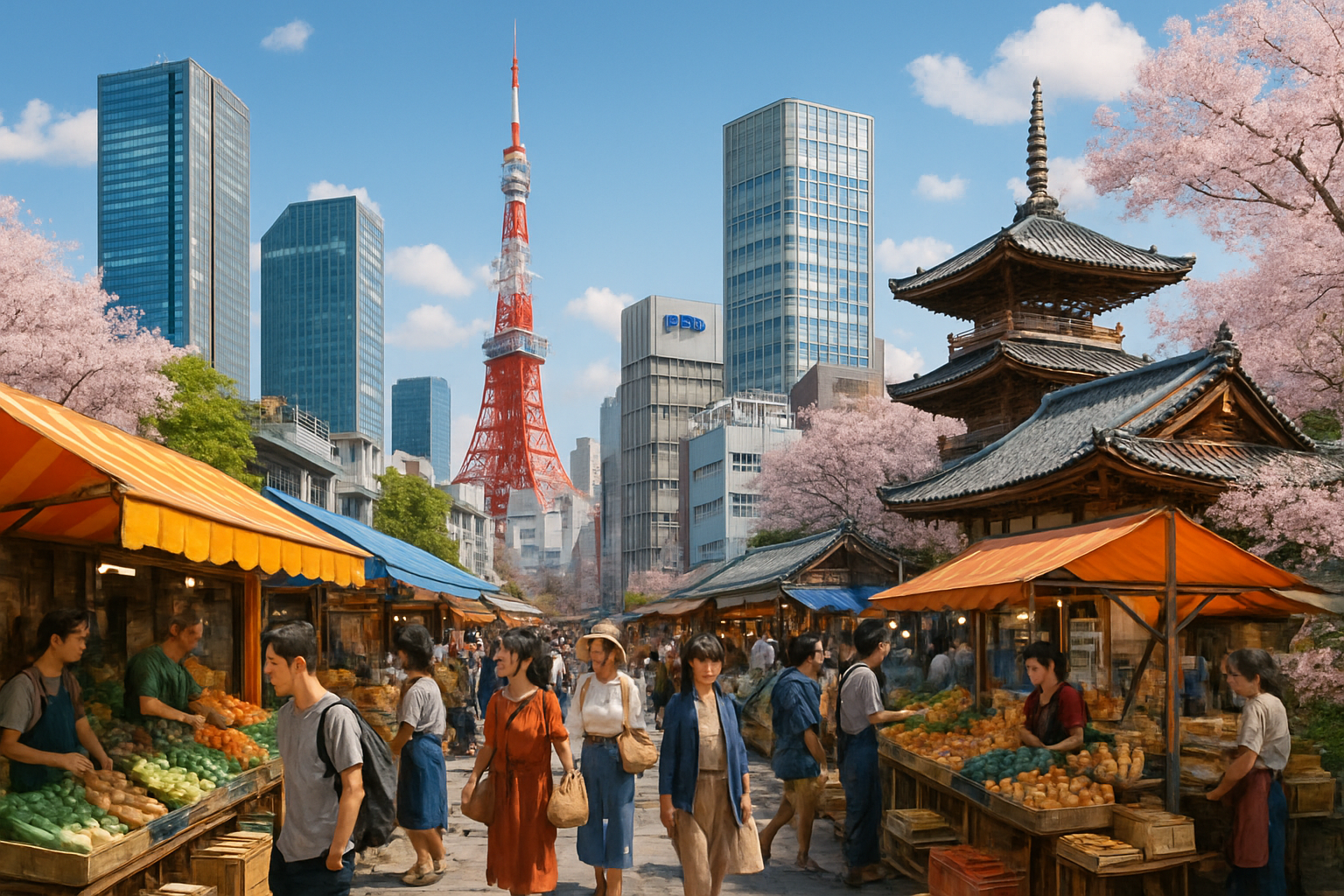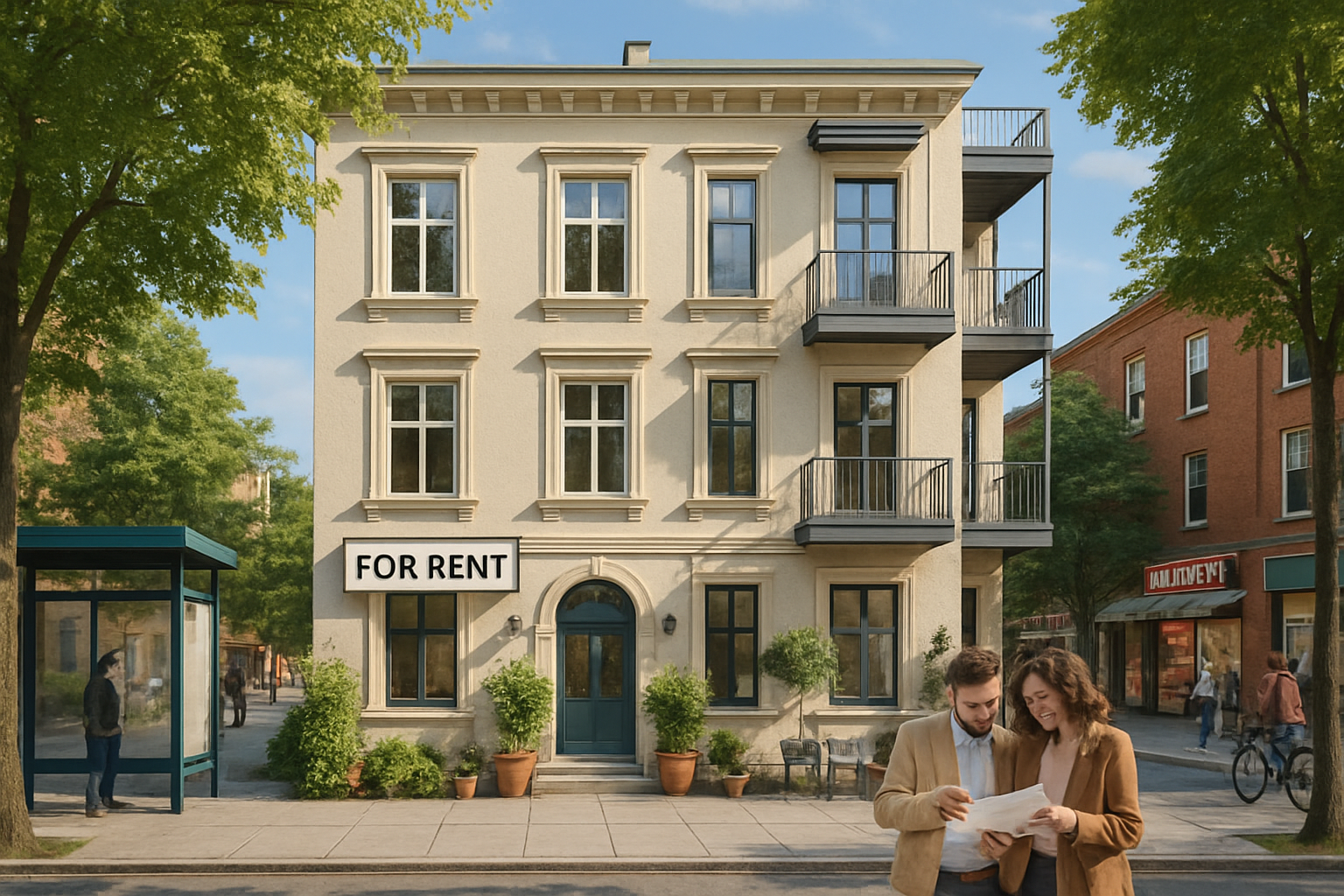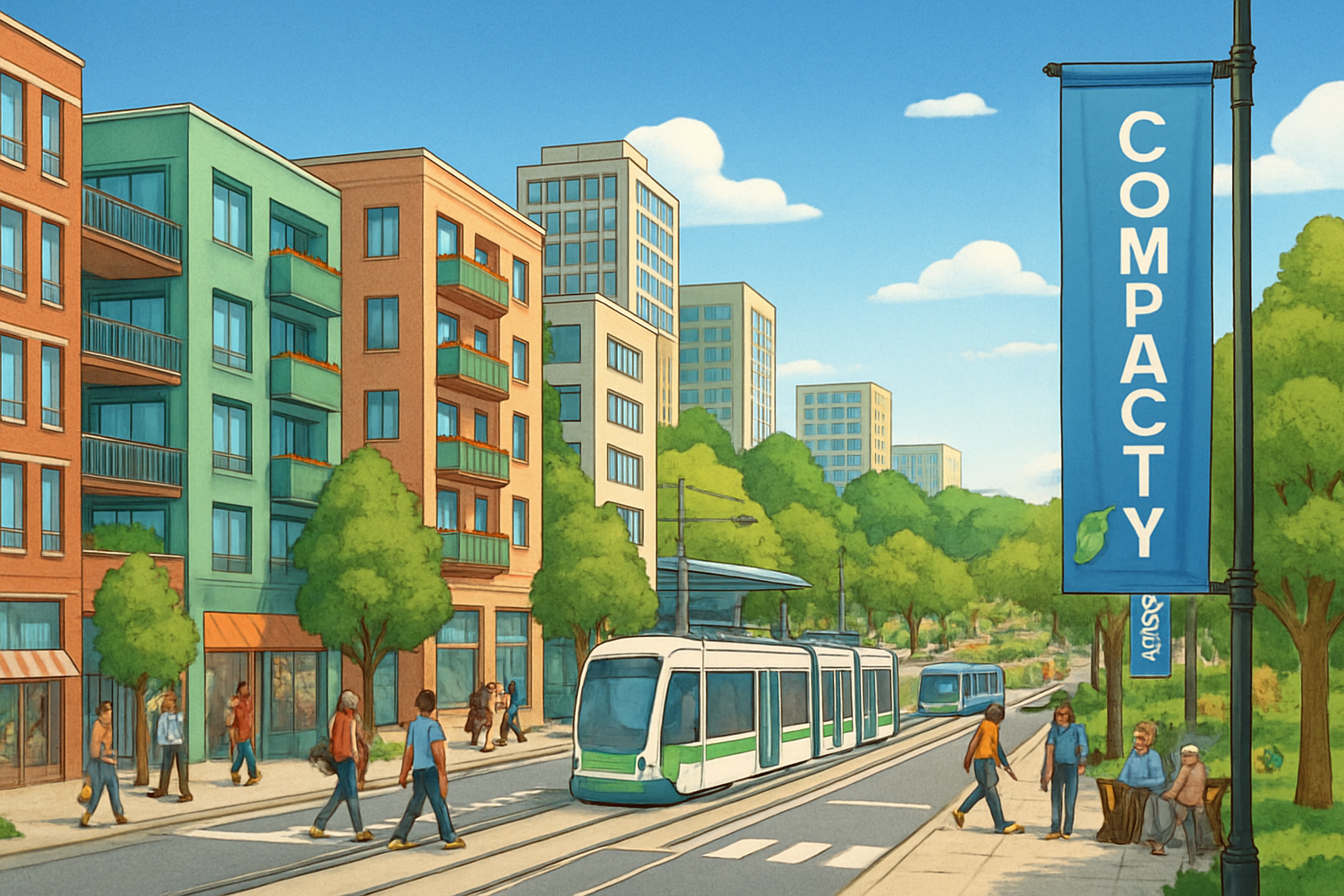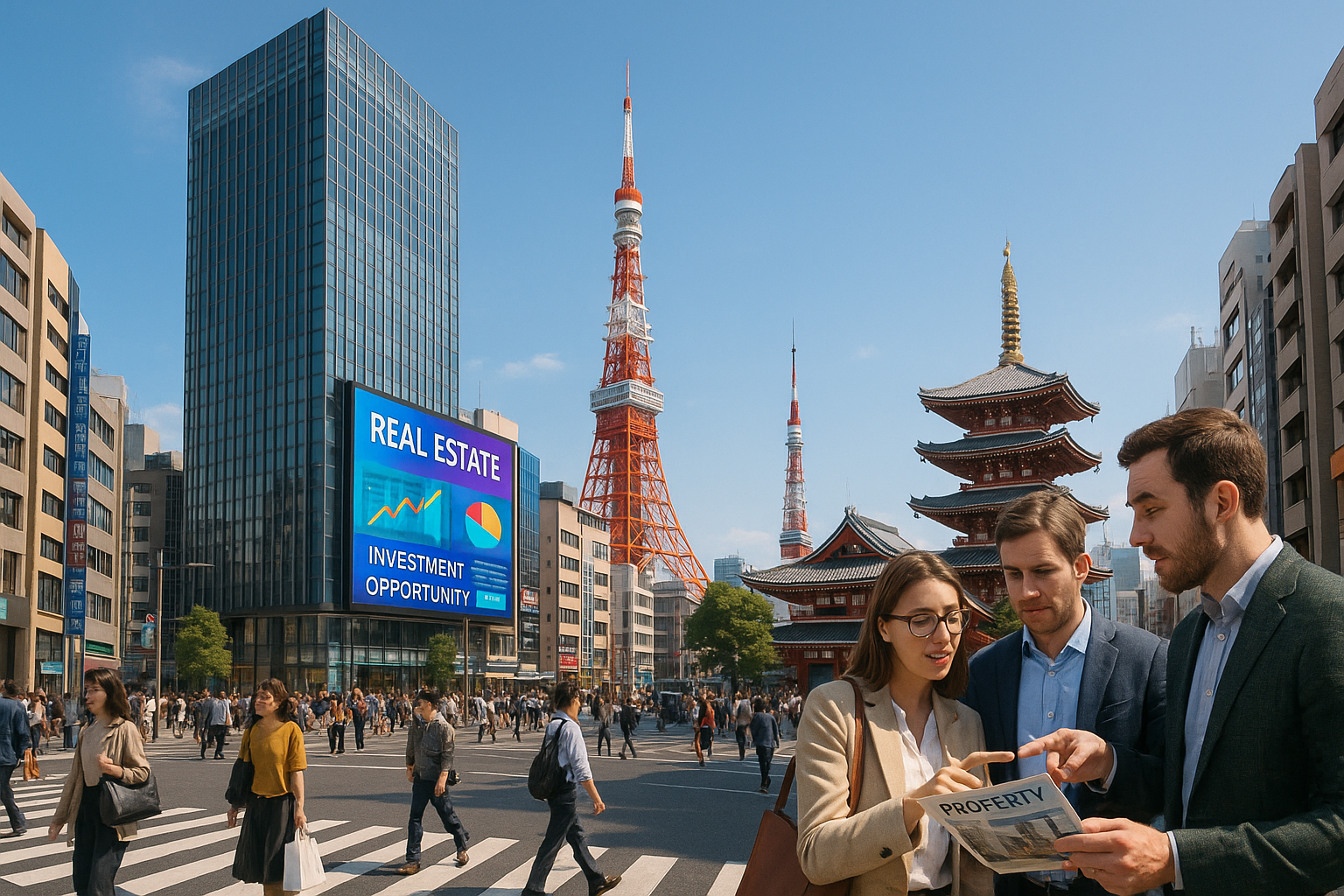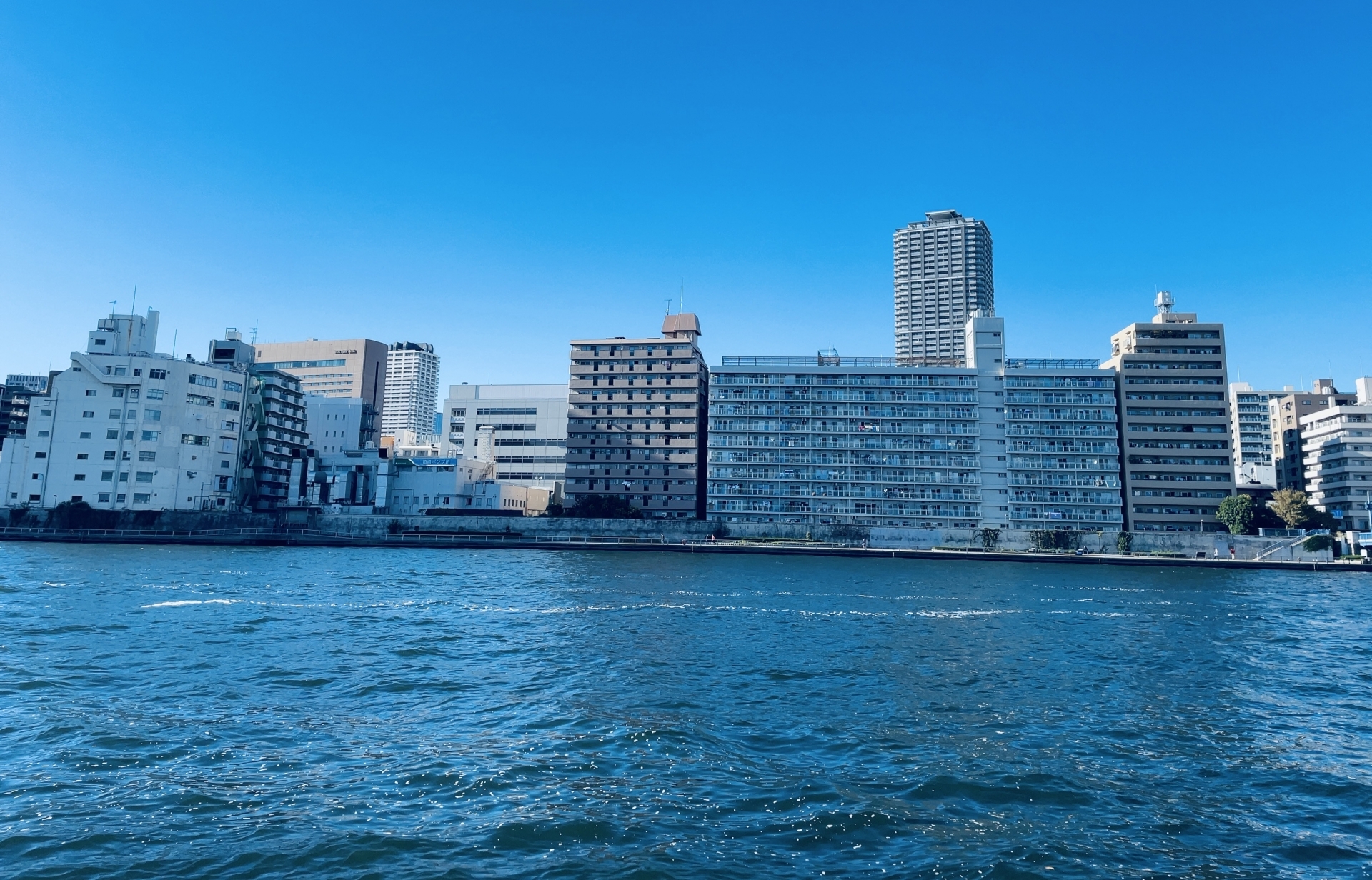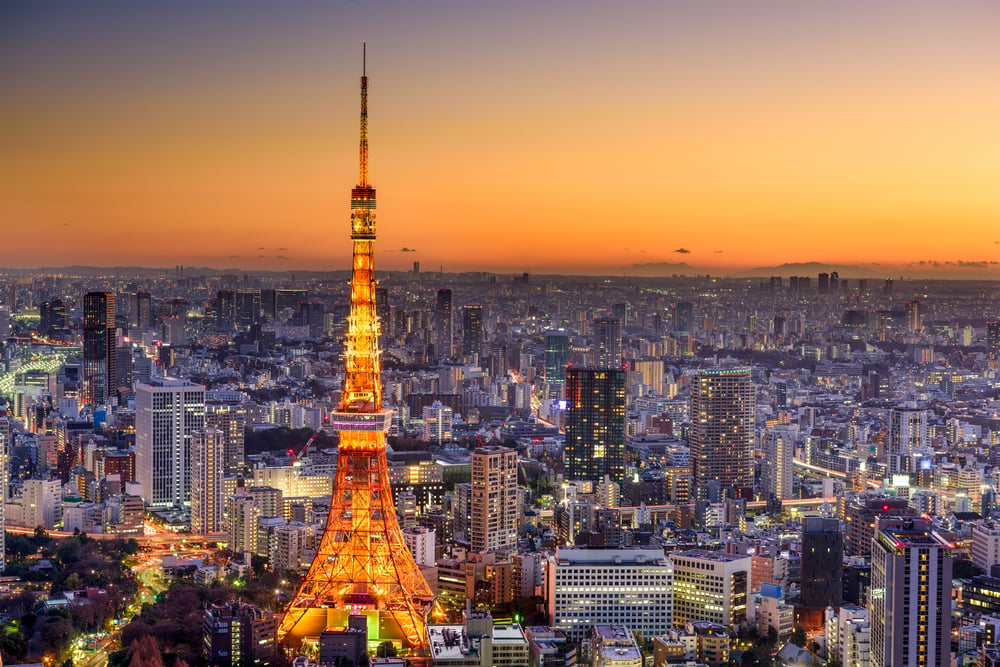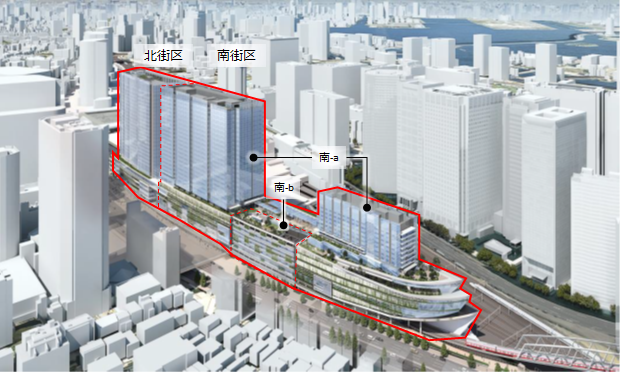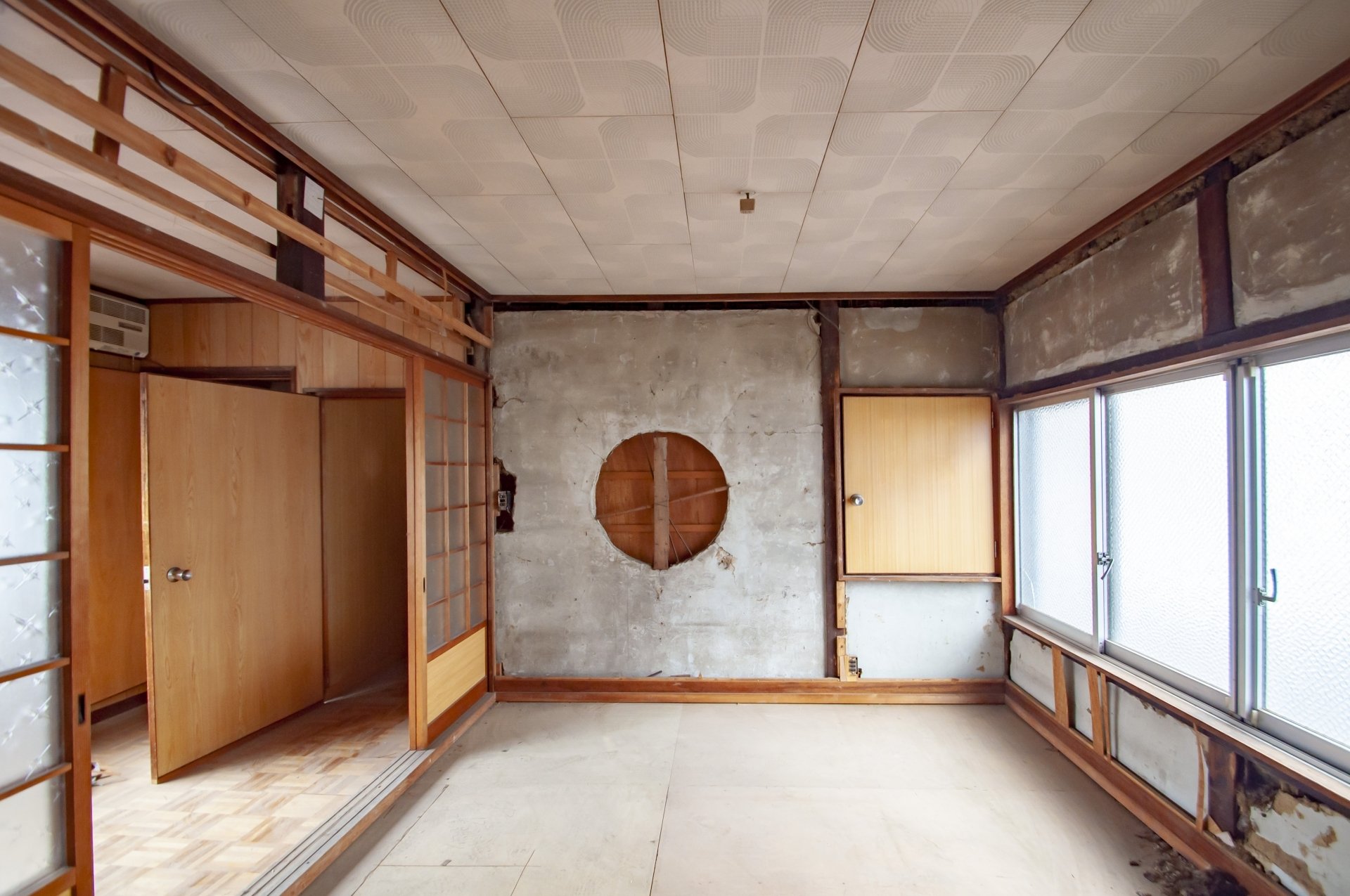The area around JR Shinbashi Station is known as a bustling business district, often referred to as “the holy land of salarymen.” However, the east exit area, where many aging buildings are prominent, is currently undergoing a large-scale redevelopment project. This article provides a detailed explanation of the project overview, latest developments, impacts on the local economy and real estate market, and comparisons with past redevelopment cases, based on the latest information as of 2025.
Overview of the Redevelopment Plan
Project Entity and Target Area
The project entity for this plan is the “Shimbashi Station East Exit Area Urban Redevelopment Preparation Association,” composed primarily of landowners. In March 2017, local landowners established the “Shimbashi Station East Exit Area Redevelopment Council” to advance preparations, and the preparation association was officially launched in February 2025. The target area is the vicinity of the east exit of JR Shinbashi Station, encompassing approximately 2.5 hectares bounded by Soto-bori Street, First Keihin Road, and JR railway tracks. Currently, the area is dominated by two buildings, the Shinbashi Station Front Building (a 9-story building consisting of Building 1 and Building 2, completed in 1966), and numerous mixed-use buildings. The station front area includes bus and taxi stands, as well as entrances to underground parking lots. The two station front buildings, which are 58 years old, are showing signs of aging, and the surrounding buildings retain a strong atmosphere of the Showa era.
Major developers and general contractors are also participating in the redevelopment project. The council signed an agreement with Taisei Corporation and R.I.A. (design consultant) in 2019, followed by agreements with Mitsui Fudosan in October 2020 and Daibiru and Toyota Real Estate in July 2023. The expertise of these private companies is supporting the planning, design, and implementation of the redevelopment project. Additionally, Minato Ward and the Tokyo Metropolitan Government have been involved since the planning stage, and discussions with the administration regarding future urban planning decisions are now in full swing.
Main Project Contents
The specific details of the redevelopment are currently (as of 2025) undecided, but it is expected to center around the construction of a large-scale mixed-use high-rise building. The plan is to demolish and rebuild multiple buildings, including the Station Building No. 1 and No. 2, into an integrated complex, which is likely to become a large-scale mixed-use building housing offices, commercial facilities, and public facilities. The urban planning guidelines for the surrounding area emphasize key strategies such as “preserving the lively alleyways characteristic of Shinbashi,” “creating pedestrian-friendly spaces,” “seismic retrofitting of aging buildings,” and “developing a station square that harmonizes with the surrounding area while preserving the unique character of Shinbashi.” These strategies are being considered for the new buildings as well. In fact, the redevelopment guidelines published by the preparatory association list three key issues: enhancing transportation hub functions (improving transfer convenience between the station and buses, Yurikamome, and other transportation modes), enhancing liveliness (developing plazas and commercial environments), and improving disaster resistance (installing earthquake-resistant and disaster prevention facilities). In line with this, plans are expected to include the redevelopment of the station square (improvements to the bus and taxi terminals and the construction of a pedestrian deck), the construction of high-rise office and commercial buildings with high safety standards, and the creation of attractive commercial and event spaces.
Schedule and Completion Timeline
The redevelopment plan began in 2015 with the establishment of a committee to consider the reconstruction of the Shinbashi Station Front Building. Since the establishment of the council in 2017, preparations have been made in stages, and an information session for local rights holders was held in October 2024. In February 2025, the preparatory association was officially established, and the project is currently in the stage of detailed discussions and agreement formation with rights holders for the urban planning decision. The official completion date has not yet been announced. While there was previously a plan to complete the project by 2022, the 150th anniversary of Shinbashi Station's opening, this has not been realized due to the COVID-19 pandemic and delays in coordination. Considering the typical schedule for large-scale urban redevelopment projects, it is expected to take several years from the urban planning decision, establishment of the main association, and approval of the rights conversion plan until construction begins, with construction itself also taking several years. Therefore, completion and the opening of the new area are likely to occur around the early to mid-2030s. In fact, including the concurrently advancing redevelopment on the west side, the overall redevelopment of the Shinbashi Station area is targeted for completion by the fiscal year 2037. The scale of the buildings (height and total floor area) and the target completion year are expected to be announced at the time of the formal urban planning decision.
Impact of redevelopment on the local economy
Creation of Vibrancy Through Commercial and Business Activation
The redevelopment is expected to contribute to the creation of vibrancy in the area through the construction and expansion of commercial facilities. Currently, the east exit of Shinbashi Station is bustling with numerous restaurants, izakayas, bars, and ticket shops, attracting many salarymen. However, the redevelopment building is expected to house a variety of tenants, including the latest shops and restaurants, attracting a new customer base different from the traditional one. For example, by hosting events in the plazas and pedestrian decks to be developed as part of the redevelopment, or by creating attractive commercial spaces, the area could transform from a neighborhood where “office workers during the day and diners at night” are the main visitors to a dynamic, diverse neighborhood bustling with people throughout the day. Additionally, improvements in the area's landscape and cleanliness through redevelopment are expected to contribute to enhancing Shinbashi's image and increasing the number of visitors. While no specific projections for tourist numbers have been announced at this stage, increased connectivity with the surrounding Ginza, Toranomon, and Shiodome areas could attract more domestic and international visitors. In fact, Shinbashi Station is a terminal station for the Yurikamome Line, which connects to Odaiba, and if the station area becomes more attractive through redevelopment, more people may stop by Shinbashi during their sightseeing trips.
Strengthening office demand and business hub functions
Shinbashi is located near the city center's business district and is an area where many corporate offices are concentrated. The redevelopment of aging buildings near the station into modern office buildings is expected to attract new office demand. Major developers (such as Mitsui Fudosan) are also participating in the redevelopment projects, which are likely to result in state-of-the-art, high-rise office towers. This is likely to attract tenant companies (such as IT firms and foreign-affiliated companies) seeking spacious office spaces, advanced earthquake resistance and business continuity planning (BCP) measures, and high environmental performance. Currently, JR Shinbashi Station is the eighth-busiest station in the JR East network (with an average daily ridership of approximately 190,000 passengers), and when combined with the Tokyo Metro Ginza Line, Toei Asakusa Line, and Yurikamome Line, it serves tens of thousands of passengers daily, making it a major transportation hub. Combined with the high transportation convenience, the provision of a comfortable office environment through redevelopment could lead to companies establishing their headquarters or branch offices in Shinbashi. An increase in the number of office workers would boost sales in surrounding restaurants and service industries, thereby increasing foot traffic day and night. Furthermore, the introduction of a BRT (Bus Rapid Transit) system is planned at the east exit of Shinbashi Station, which will strengthen access to the waterfront area and enhance its role as a hub for business exchanges.
Regional Infrastructure Development and Improved Convenience
The redevelopment project includes not only the replacement of private buildings but also the development of public infrastructure. For example, the redevelopment of the station square will optimize bus and taxi stands, and pedestrian decks and underground passageways will be constructed to allow people to move around without getting wet in the rain. This will greatly improve convenience for users, enabling them to transfer and pass through comfortably even in rainy weather. Furthermore, the Tokyo Metropolitan Government is working with the redevelopment projects for the east and west exits to formulate a “Shinbashi Station Area Infrastructure Development Policy,” which includes plans to expand the underground pedestrian network and create new public spaces. These infrastructure improvements will not only enhance convenience for commuters and visitors but also help alleviate congestion and traffic jams during peak hours. In terms of safety, the development of squares and building-based waiting areas equipped with the latest disaster prevention facilities is expected to serve as temporary evacuation sites during large-scale disasters, fulfilling the role of a regional disaster prevention hub. Overall, the redevelopment is expected to contribute to the creation of an attractive city that people will choose to live in by renewing the urban functions and improving the convenience of the Shinbashi Station area.
Impact on the real estate market
Impact on land prices and future trends
The redevelopment plan for the east exit of Shinbashi Station is expected to gradually influence land prices in the surrounding area. Currently, land prices in the commercial areas around Shinbashi Station are among the highest in Tokyo, with estimates suggesting that land in the Shinbashi 2-chome area could be traded at approximately 10 to 13 billion yen per 100 square meters. As the redevelopment plan progresses smoothly and concrete details become clearer, there is a possibility that pressure for land price increases will rise due to investor expectations. However, as of 2025, the plan is still in the discussion stage, and some experts predict that “although there are future redevelopment plans, there will be no significant changes in regional factors at present, and the current situation is likely to remain unchanged for the time being.” In other words, it is unlikely that there will be a significant surge in land prices until the actual redevelopment buildings are completed and the streetscape begins to transform. On the other hand, recent redevelopment booms in the eastern part of Minato Ward (the Toranomon to Shibaura area) have led to a significant relative increase in land prices in surrounding areas. Continued inflow of domestic and international investment capital into Minato Ward, which is advancing toward internationalization, is expected. As the completion of the Shinbashi East Exit area comes into view, there is a high likelihood that land prices will rise, factoring in the redevelopment effects. Official land price announcements and appraisals are also expected to reflect improved profitability after redevelopment, leading to higher appraisal values.
Impact on rental rates
Redevelopment will also impact real estate rental rates in the Shinbashi area. First, newly constructed high-spec offices within redevelopment buildings are expected to enter the market at rental rates exceeding the surrounding average (so-called prime rental rates). This will raise the overall office rental rate level in the Shinbashi area while potentially exacerbating the polarization between newer buildings and older, outdated structures. If tenants concentrate on moving into buildings with the latest facilities, older buildings in the surrounding area may be forced to lower their rents or renovate to enhance their competitiveness. In fact, in areas that have been revitalized through redevelopment (such as Shibuya and Shinagawa), there have been cases where the vacancy rate of older buildings temporarily increased and rents softened after the introduction of new buildings. In the Shinbashi East Exit area, there is a possibility that the vacancy rate of older buildings will increase immediately after the completion of new buildings due to the backlash from the demand for relocation to new buildings. However, in the long term, it is expected that the overall brand value of the Shinbashi area will increase, leading to an increase in the rental rates of the surrounding areas as well. Commercial tenants face similar trends, with major chains and brand-name stores moving into commercial zones within redevelopment buildings and paying high rents, while traditional small businesses may struggle to afford rising rents and relocate outside the area. While such shifts in rental rates may occur, the overall redevelopment area is expected to see an increase in real estate revenue potential.
Investor Trends and Market Evaluation
Shimbashi is an attractive area for investors, and redevelopment is further heightening its appeal. As evidenced by the participation of major companies such as Mitsui Fudosan and Nomura Real Estate in the redevelopment council, the area is also attracting strong interest from institutional investors and real estate funds. With favorable funding conditions, there is strong investment appetite for prime properties in the city center, and the large-scale project near Shimbashi Station may be considered for acquisition through REITs (real estate investment trusts) even before completion. In fact, after the redevelopment buildings are completed, investment transactions that appropriately evaluate their real estate value are likely to occur. Redevelopment properties in Tokyo's downtown area tend to attract competition from domestic and international investors, and Shinbashi is no exception. On the other hand, what is important for investors is the risk management of the redevelopment project. The Shinbashi Station Front Building is a property with numerous co-owners, and there has been a history of plan delays due to time-consuming rights adjustments. Despite these adjustment risks and the risk of increased construction costs, considering the strong location in Minato Ward and the post-redevelopment profitability (increased office and commercial rental income), the investment appeal is likely to be significant. In particular, once the redevelopment building is completed, it is expected to become a landmark property directly connected to Shinbashi Station with the latest specifications, and thus a highly valued asset in the real estate market. Attention is focused on the business plans and financial projections to be announced in the future. As for investor trends, a scheme where the developer acquires the reserved floors converted into rights before completion and then sells the entire project to a real estate fund or similar entity is also conceivable. Overall, the Shinbashi Station East Exit Redevelopment Project is positioned to boost the real estate value of the area and provide new investment opportunities to the market.
Comparison with past redevelopment projects around Shinbashi
Comparison with Shiodome Shiosite – Large-scale development and public-private collaboration
In the Shiodome area adjacent to the south of Shinbashi Station East Exit, the “Shiodome Shiosite” project, one of the largest redevelopment projects in Japan, was carried out in the early 2000s. On the former site of the Shiodome Freight Station (a vast 31-hectare site), a major new urban area emerged featuring 13 high-rise buildings, including the Dentsu Headquarters Building, the Nippon Television Tower, ultra-high-rise apartments, and commercial facilities. Shiodome Shiosite was a massive project jointly developed by the Tokyo Metropolitan Government and the Urban Renaissance Agency (UR), with a total construction cost exceeding 400 billion yen and an estimated economic ripple effect of 1.1 trillion yen. On the other hand, the Shinbashi East Exit redevelopment project, with a site area of approximately 2.5 hectares, is smaller in scale compared to Shiodome. However, its location directly connected to the station gives it extremely high commercial value. While Shiodome's development involved the creation of new land from unused sites, the Shinbashi East Exit project is a redevelopment of an existing urban area, requiring extensive coordination with long-standing tenants and landowners. While Shiodome was able to build a new city from scratch, the Shimbashi East Exit project is characterized by the fact that it has taken many years to reach local consensus. Additionally, while the development concept for Shiodome was to create a new hub connecting the city center and the waterfront, the theme for the Shimbashi East Exit project is to “revitalize existing functions while preserving the unique charm of Shimbashi,” with plans to retain some of the traditional alleyway-like vibrancy even after redevelopment. Overall, while Shiodome Shiosite was a large-scale economic hub, the redevelopment of the east exit of Shimbashi Station is more focused on improving the appeal and functions of the station area, requiring a more detailed approach to urban planning rather than a large scale.
Comparison with the redevelopment of the west exit of Shimbashi Station (around the New Shimbashi Building)
In addition to the east side, redevelopment plans are also underway on the west side of Shinbashi Station. The New Shinbashi Building (completed in 1971, 11 stories above ground with a total floor area of approximately 58,000 square meters), a symbolic structure on the west side, is famous as a retro Showa-era building densely packed with restaurants and izakaya bars. However, it is over 50 years old and has been pointed out as having seismic safety issues. In this West Exit area, a redevelopment preparation association has been established for an approximately 2.8-hectare zone including the New Shinbashi Building and SL Square, and urban planning discussions are currently underway. A distinctive feature is the plan to divide the redevelopment area into two zones—the “SL Square and New Shinbashi Building District” on the north side and the “Sakurada Park and Lifelong Learning Center District” on the south side—and construct high-rise buildings in each zone. The project collaborators include Nomura Real Estate and NTT Urban Development, forming a different developer lineup compared to the east side (Mitsui Fudosan, etc.). A major difference from the east side redevelopment is that the New Shinbashi Building in the west side is a massive structure with approximately 320 co-owners. As a result, the barriers to reaching consensus are higher than on the east side, and discussions on redevelopment have been stalled for over a decade. As of 2023, the urban planning decision has not yet been finalized, and compared to the east side, the project is slightly behind schedule. However, Minato Ward is advancing the development of a master plan that treats the east and west sides of Shinbashi Station as a single integrated area, and both redevelopment companies are collaborating to discuss urban development policies. While the planning methods and participating companies differ between the east and west sides, once completed, the high-rise buildings on both sides will face each other across the station, with the area around Shinbashi Station set to undergo a simultaneous landscape renewal. There may also be differences in the intended uses of the buildings. For example, the west side will include public facilities such as a lifelong learning center, so administrative services will likely be incorporated into the redevelopment. On the other hand, the east side is likely to be purely privately led commercial and business-oriented development. While there are differences in the details of the plans, the common point is that both are regeneration projects for the two major buildings constructed during the post-war reconstruction period, the “Shimbashi Station Front Building (East Exit)” and the “New Shimbashi Building (West Exit).” As a result, the area around Shimbashi Station will be transformed into a new urban landscape with large high-rise buildings rising on both the east and west sides in a few years.
Comparison with surrounding areas
In the surrounding areas near Shinbashi Station, redevelopment projects have also been underway in recent years, and comparisons with these areas are also worth noting. For example, in the Uchikoumachi 1-chome District (north of Hibiya Park) to the west, a large-scale project (6.5 hectares in area, approximately 1.1 million square meters of floor space) including the redevelopment of the Imperial Hotel is underway, with partial completion targeted for the 2028 fiscal year and full completion by the 2037 fiscal year. In the Toranomon area to the southwest, redevelopment has also become active with the opening of the Circular 2nd Road (Shin-Tora-dori), and large-scale projects such as the Mori Building-led Azabudai Hills (8.1 hectares, partial opening in 2023) are underway. Compared to these, the development scale of the Shinbashi Station East Exit area is smaller, but its ripple effect is by no means small. There are examples where the improvement of access through the construction of new roads between Toranomon and Shimbashi has led to an image upgrade of the entire area and an increase in visitors. Similarly, the completion of the redevelopment of the Shimbashi Station area will serve as the final piece in strengthening the urban functions of the surrounding Uchikanda, Toranomon, and Shiodome areas, contributing to the further development of the city center. The fact that the Shinbashi Station area, which had been lagging behind in redevelopment, has finally begun to move forward is a significant point of this project, as it will update Shinbashi, which had been left behind by Ginza, Shiodome, and Toranomon, and harmonize it with the surrounding areas.
Conclusion
The redevelopment plan for the east exit of JR Shimbashi Station is a project that aims to improve safety and convenience by replacing old buildings while creating a lively atmosphere in front of the station. Since discussions began in 2015, the project has steadily progressed to the establishment of a preparatory association, and in 2025, it has finally entered the stage of concrete urban planning. The new high-rise buildings and plaza created through redevelopment will provide Shinbashi with a sophisticated space that it has never had before, while also preserving the lively atmosphere that has been characteristic of Shinbashi. The project is expected to have a ripple effect on the local economy and increase real estate values, and together with the already transformed areas of Toranomon and Shiodome, the entire Shinbashi station area is expected to evolve into a hub that will support the future of Tokyo. On the other hand, preserving the nostalgic atmosphere of the Showa era and accommodating small and medium-sized businesses remain challenges. As the plan progresses, it will be important to incorporate the voices of local stakeholders and find ways to appropriately preserve the unique character of Shinbashi. As the official plan is unveiled and construction progresses, we will continue to monitor the process of the city's transformation. The Shinbashi Station East Exit Redevelopment Project is a highly anticipated initiative that aims to revitalize a corner of Tokyo's central area that has remained unchanged over time, bringing new vitality to both the local community and the economy.

Daisuke Inazawa
Representative Director of INA&Associates Inc. Based in Osaka, Tokyo, and Kanagawa, he is engaged in real estate sales, leasing, and management. He provides services based on his extensive experience in the real estate industry. Based on the philosophy that “human resources are a company's most important asset,” he places great importance on human resource development. He continues to take on the challenge of creating sustainable corporate value.

.png)

